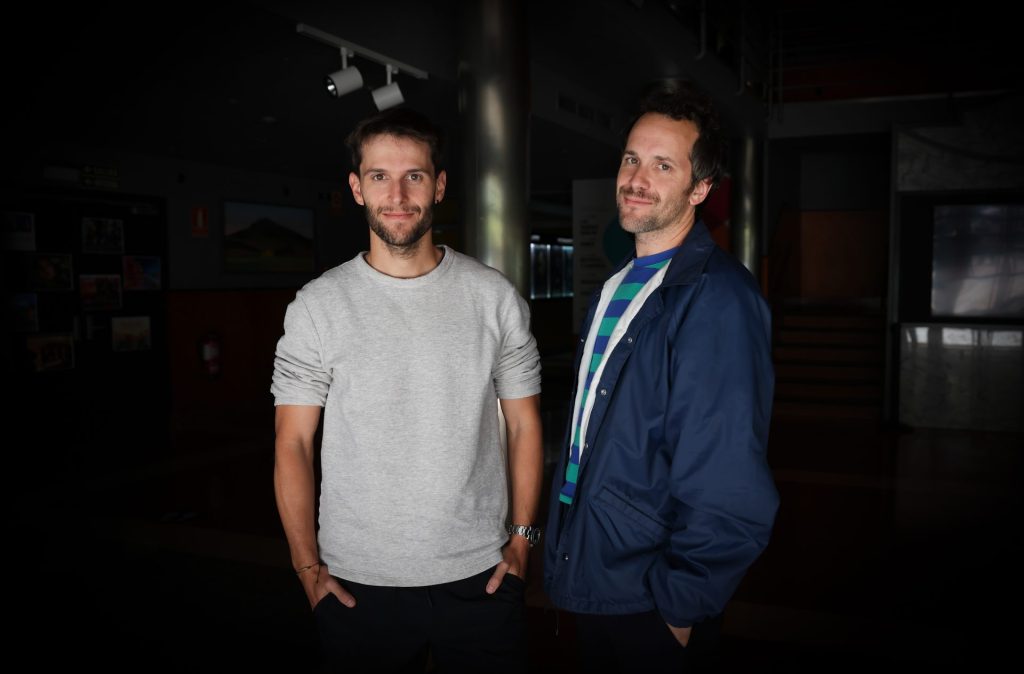Leticia de las Heras
Pamplona (EFE).- The brothers Alberto and Iñigo Gastesi share for the first time work in a feature film as director and leading actor respectively in ‘The stillness in the storm’, a story that arrives this Friday at Navarrese cinemas and addresses the importance of the decisions made and the options discarded, paths that, according to what the actor told EFE, “are also part of your life.”
Q: Could it be said that this film confronts what could have been and what each one interprets of those paths that they have not taken?
Iñigo: We are decisions from the moment we wake up, it is to see how those paths that you have not taken are also part of your life. Nobody knows what could have been, it is simply what each one builds in his head.
Q: Has the absence of other co-producers given you more freedom?
Alberto: It’s a double-edged sword because you don’t see the dangers. In addition, he has also had a super fast financing time that has not followed the usual selection processes that make there are many hands on the script.
Q: I understand that this will have made public feedback even more important
Alberto: When we finished editing the film and saw it in its entirety for the first time, we went home crying because we had no distance, we didn’t know if it was good or bad, we weren’t even sure if it was a movie because we saw it as an amalgamation of things connected. We needed to let it go, distance ourselves and start receiving people’s opinions.
Iñigo: I was very surprised that, while it seems like a proposal that could only work in specific circles, what we are seeing is that people who have not seen, for example, a black and white film or who are not accustomed to that slower pace, for me it is the most beautiful thing we are receiving.
Q: What is the use of black and white and the 4:3 format?
Alberto: They are an original idea that was always there, it is not a narrative decision to tell something better or convey an idea, it has more to do with making a film the way we would like to make cinema.
Q: Does the same thing happen with the absence of a soundtrack and the fact that the camera is so static?
Alberto: There really are a lot of camera movements, for everything that represents the present we used traveling routes every day and the past is all hand-held and never still. The theme of music is another of the things that was in the germ of the idea, to make a film that talked about love through a reunion and the sounds of the wild such as the wind, the waves or the storm.

Q: Iñigo, how has the character of Daniel worked, the first in his film career as a leading man?
Iñigo: When he was young I worked on more personal aspects and tried to find that freshness with which you remember youth, in a more anarchic way, without having structured what I have worked on in previous days. For the part of the present, in addition to the physical change because I had to gain weight, it was something much more rational, I tried to make the creative processes weigh more and delve into those questions that we all ask ourselves at some point when we reach Daniel’s age.
Q: To what extent has your own experience influenced how you have reflected Daniel’s maturity?
Iñigo: Daniel and Iñigo are not the same, but I can empathize with the conflicts they may have. Even if you play a very distant character, you always have to find support that comes from you, at least that’s how I see the interpretation and that’s why it’s so beautiful, it allows you to play but always from a personal truth.
Q: In the film, Daniel insists on the subject of happiness. Do you think that growing up entails having a more conformist conception of happiness?
Íñigo: Absolutely, you have no choice. The meaning of what happiness is changes, when you are young you look much more for sensory happiness but as the years go by, acceptance comes into play.
Alberto: I think it shouldn’t be like that, it’s something we have to work on and, without being conformists, be at peace with who we are and not hold grudges with ourselves or with others. It has to do with knowing that life is giving up, which is something that perhaps when you are young you are not aware.
Q: Is the whale that appears in the film the one that washed up in La Concha in 2012?
Íñigo: Yes, I remember that we went to see it together and it was like in the movie, with that silence.
Alberto: We were there and on the other hand, Alejandra, who, although we still hadn’t dated, has ended up being my wife and artistic director of the film. She was not part of the first script, she joined shortly before shooting because we saw that she could have many interesting readings that related the characters, I really liked that this coincidence set the story in motion.






